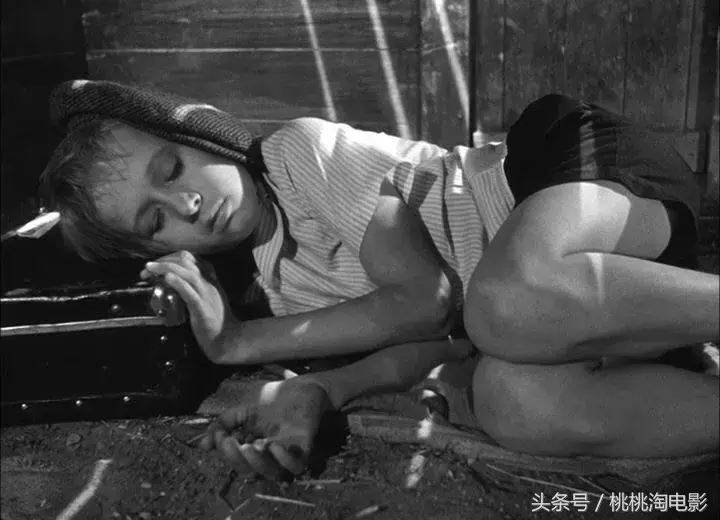Previously, I watched a debut feature film in Pingyao, Welcome, or Idle People Are Exempted (1964), directed by Yelem Klimov, who made "See for Yourself" (1985).
This is a very interesting children's summer camp movie, about the little boy Enoshkin who was expelled from the camp because he skipped class and swam to the lake forbidden area, and he was worried that his grandmother would be angry when he knew about it, and decided to stay in the camp and hide. Classmates have been secretly helping him in case they are discovered by the Director of Instruction.

"Welcome, or Idle People"
In fact, this movie is not only a children's comedy, but also an adult social fable.
Including the whistleblowers around the director of the teaching, "ordinary citizens" do not know who the "whistleblowers" are, but they do their best to help the persecuted Inoshkin. In the camp of Enoshkin's followers, support for him was more like a popular uprising. The director of education trained many of his students to be "resistance fighters," and he treated Inoshkin more like a crackdown.
Inoshkin's grandmother looked very much like Khrushchev.
Seemingly metaphorical, it is actually entertaining, with a serious neuroticism, which is overshadowed by the sensitivity, tenderness and sincere friendship of the children, and the joke scenes of laughter and chase are pleasant, and even in the end there are elements of surrealism. In addition to the main plot, the film also reveals life at summer camp. Inspirational chants, your schedule, hobbies and undiscovered minor roles.
However, my pleasure with the film lies more in his picture composition and scene scheduling, which is the constructivism prevalent in Soviet graphic design at that time, the arrangement and combination of various graphic elements, including symmetrical composition and central composition that are always full of order and beauty:
Even doubt Weiss. Anderson has also seen the film, because many of the elements in Moonrise Kingdom are quite similar to the film. A few comparison charts were made:
"Welcome, or Idle People" / "Moonrise Kingdom"
Even Wes Anderson's beloved two-dimensional laws of motion— horizontal movement and movement shots moving up and down — can be seen in Welcome, Or No Ones.
Two-dimensional movement, orderly composition, serious neuroticism, and hidden political metaphors... And, of course, the plot.
And "Moonrise Kingdom" also has similarities in plot to "Huan", the trigger is that a team of boy scouts are stationed in the Evankh camp, and the instructor finds the school boy Sam left a letter one morning. The story takes place in 1965 (Huan is a 1964 film). It is also a commonality that the front is full of order, and then everything is in an orderly disorder.
The funniest and most memorable character is a boy who is always out of place, constantly breaking into key plots, asking the same question each time: "What are you doing here?" "Every time I was interrupted by my friends, I left with interest. At the end of the film, it even becomes the posture of the narrator, like the narrator of the green hat infrared sleeve in "Moonrise Kingdom".
From another point of view, the children of the summer camp in the two films can rebel against the above system and help the protagonist, which also reflects the theme of "leading to the adult world".
Isn't it like that?
It is not surprising that the film language and narrative style invented by the filmmakers of the former Soviet Union still influence many films and directors today. Geniuses like Vertov and Eisenstein discovered how to use images to arrange, combine, and express ideas in a movie. Wes. Anderson loves symmetrical composition so much that the visual language of Soviet cinema must have been something he loved.
When I first watched the Russian-German co-production "I Was 19 Years Old" (1968) directed by Conrad Wolf, I thought that Wes Anderson's film was comparable to the character, photography, and costumes of that film.
"I Was 19 Years Old"
Wes Anderson has always pleased fans with his signature visual style, always arranging everything in the film as neatly as possible, creating a "Virgo induction" style of flat composition, especially symmetry and trichotomy.
In the classic film "The Man With the Camera" (1929), Vertov also used a large number of symmetrical compositions, low-angle shooting, superimposed images, split screens and other techniques.
The Man with the Camera
Not only "Moonrise Kingdom", "The Grand Budapest Hotel" can also see the connection with the Soviet Union. The architectural style of the hotel itself, and even the interior of the cable car and bathroom, is the embodiment of the architectural relics of the Soviet era. Perhaps Anderson has been drawing design inspiration from Soviet films.
The composition of "Welcome, Or Idle People", I think it was more or less influenced by the soviet film posters of the silent film era, which were very similar to the party and government propaganda posters, a propaganda tool, and also gave birth to an artistic genre, that is, "constructivism".
"Constructivism" is the use of expressive geometric figures, arrangements, illustrations, and hand-recombinations in graphic design. The Steinberg brothers of the former Soviet Union were representatives of constructivist graphic design until the death of his younger brother Gorky in a motorcycle accident in 1933. But the two left behind a large number of classics, such as the popular "Battleship Potemkin" and "The Man with the Camera" and other films are from their hands.
Two years ago, there was a documentary film " The Red Star Ice Team " , whose posters also adopted the constructivist style of the Steinberg brothers , but also had the seriousness of party and government posters.
Red Star Ice Hockey Team poster
Discovering the development and inheritance of a certain film is really a very interesting subject.